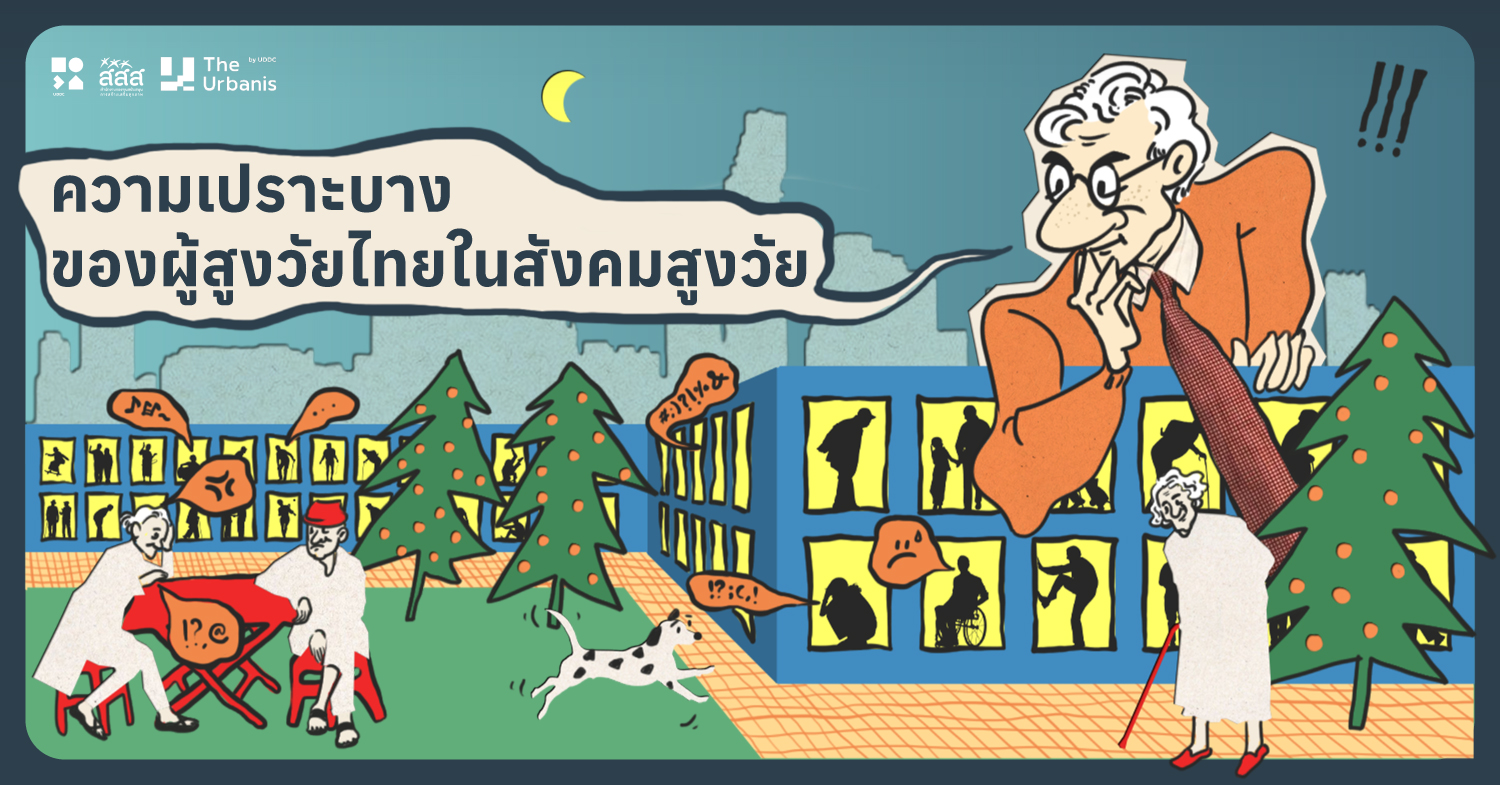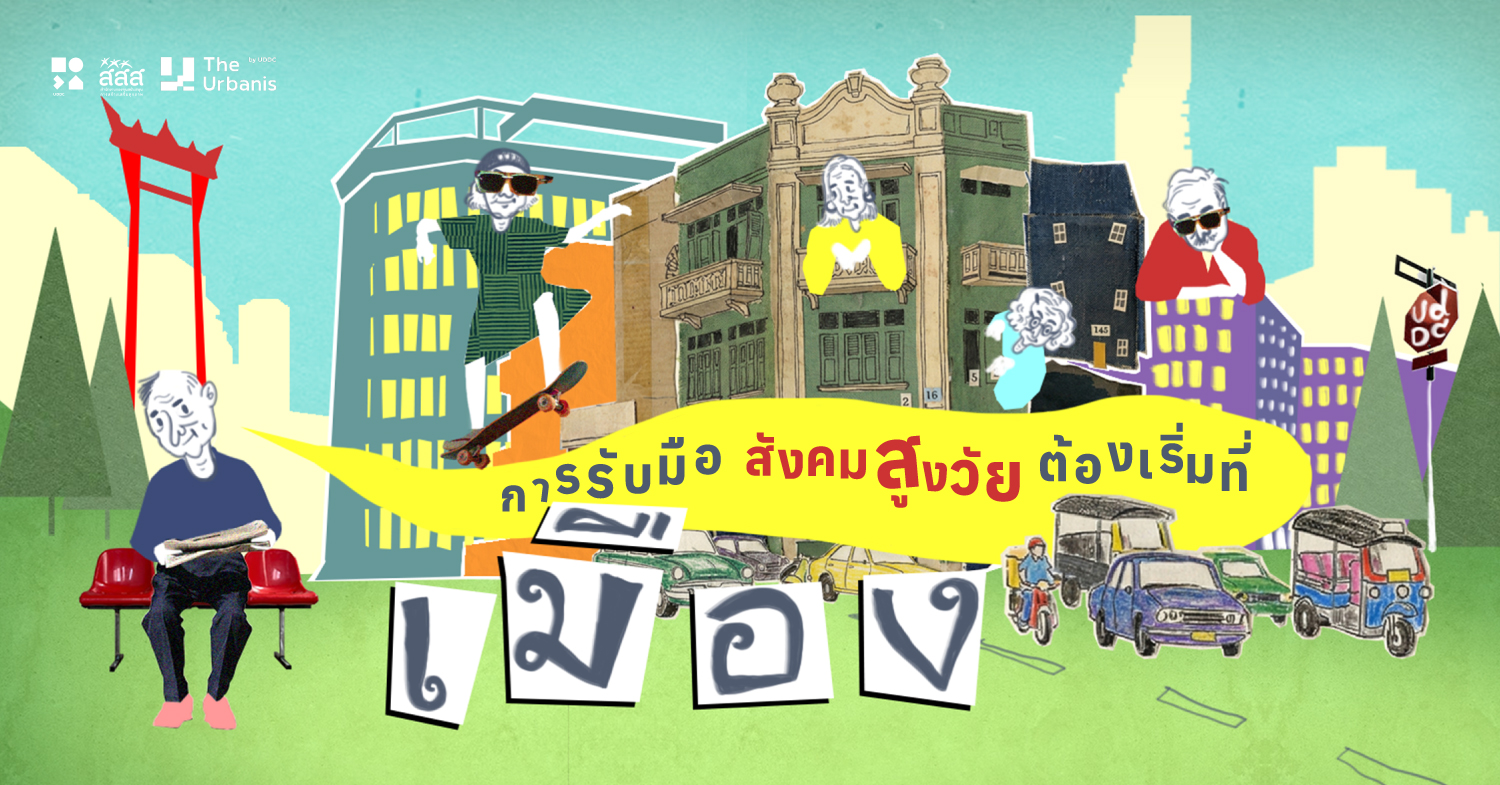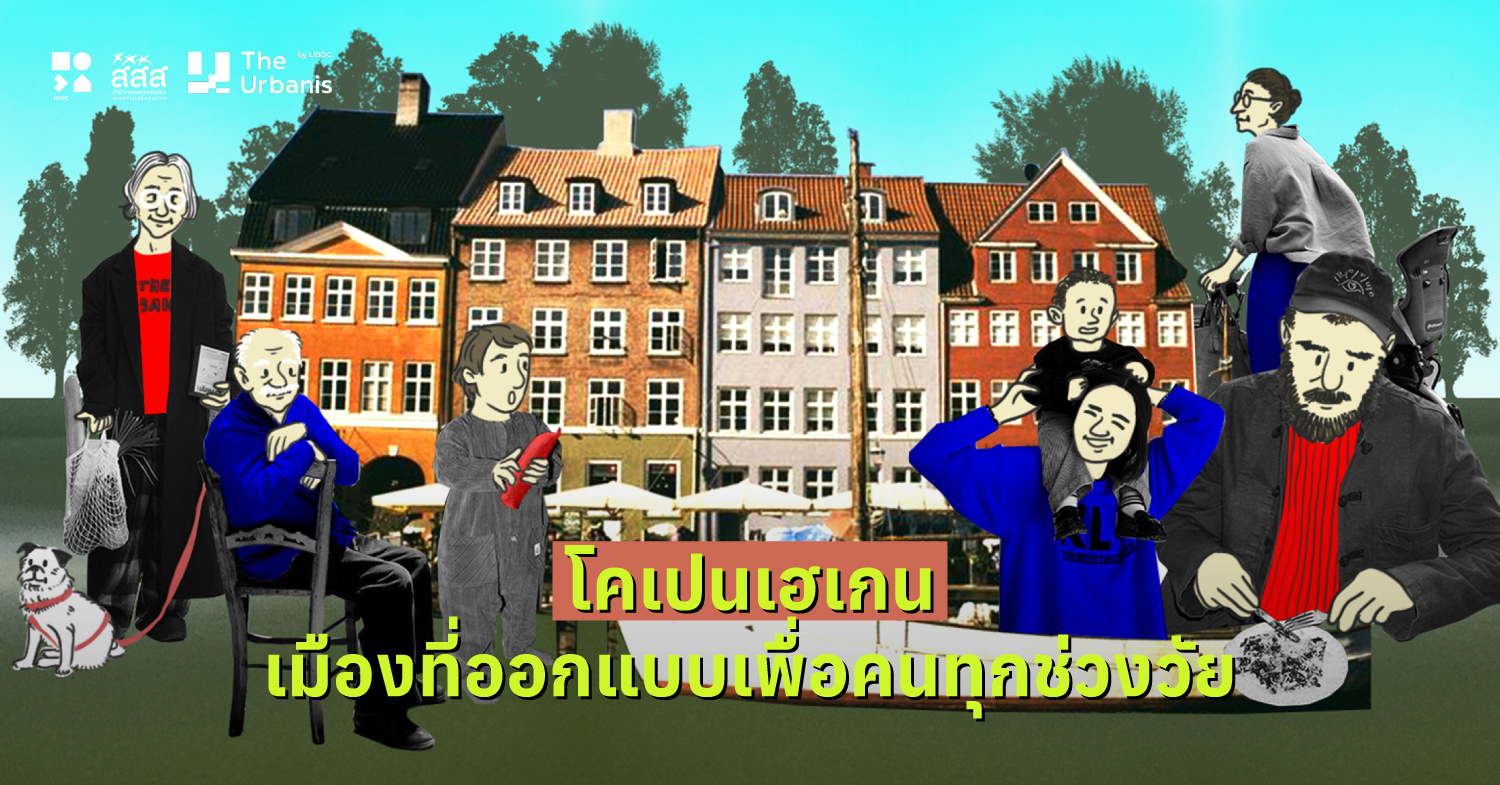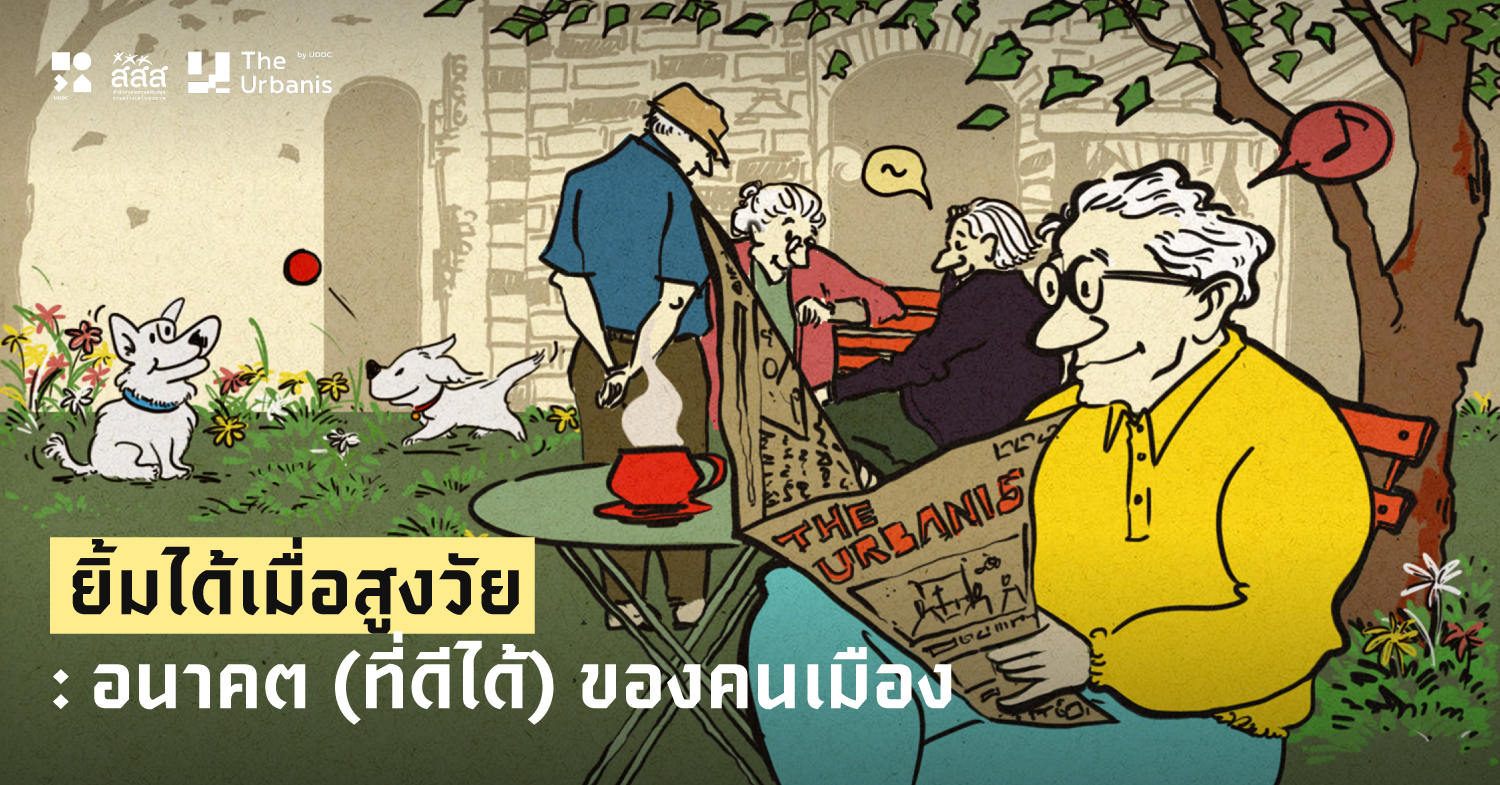16/09/2020
Life
The new world in the COVID-19 era: Cities have to change because the virus has changed them
รศ.ดร. นิรมล เสรีสกุล
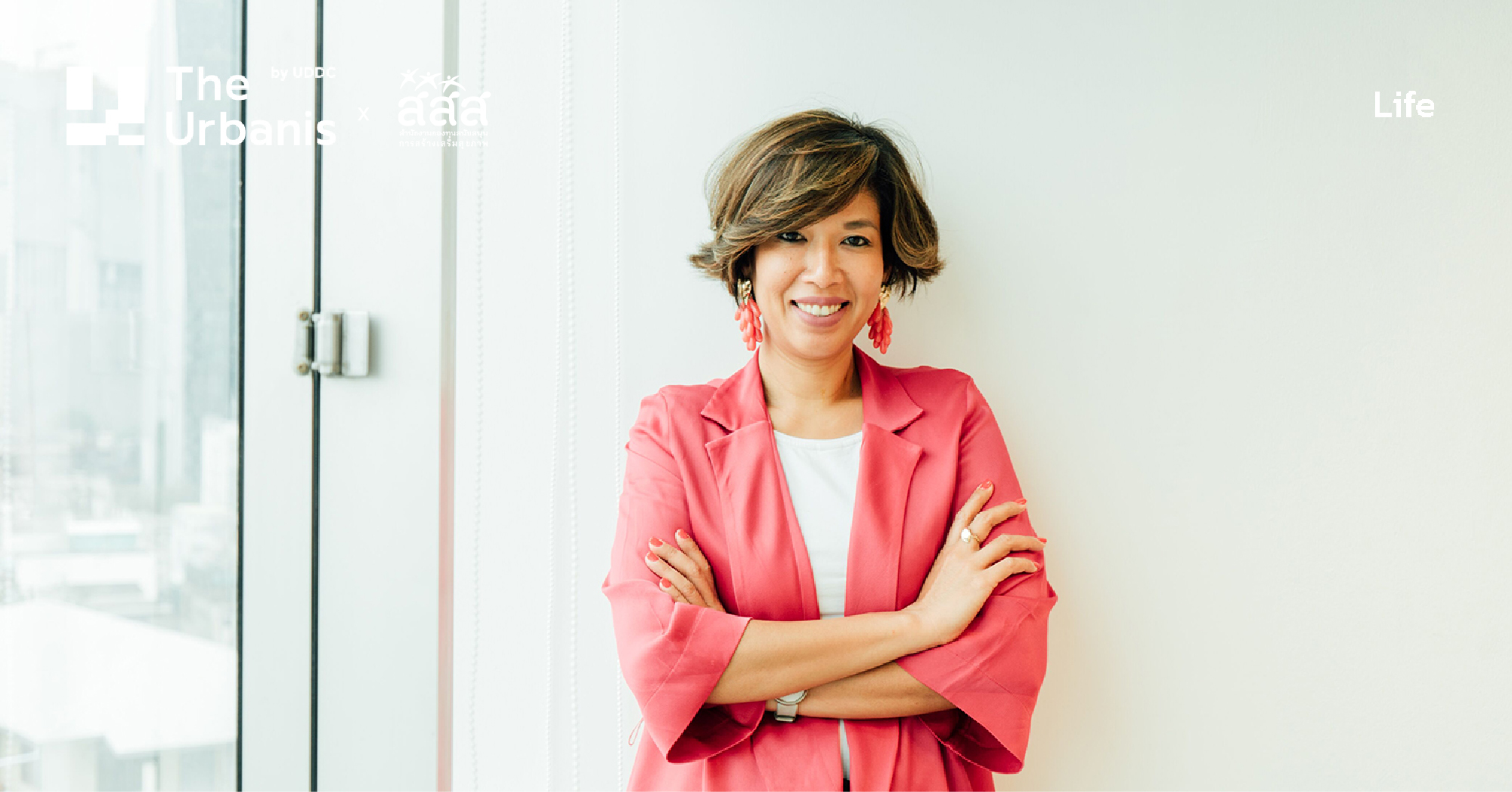
Excerpted from the interview: “Cities and the Pandemic” conducted by Al Jazeera as a part of its program Voice GO, online, and the report: The Secret Sauce: Executive Espresso, The Standard online
What does the novel coronavirus tell urban planners?
For me, urban planning designers are professionals who design appropriate urban environments so that all groups can live, play, socialize, work and co-exist happily in the city. However, now, town planners are also facing an existential crisis like other professions. Many are asking: “How can I help? How is the knowledge I have now useful in this situation?” The outbreak of COVID-19 tells us 2 things:
- Knowledge and the information that is available is not enough to clearly explain the dynamic interaction between the viral outbreak and the city. That’s because we are only at the beginning of the pandemic. A few questions: “How does the physical environment affect the spread of the virus? How will the virus affect the city: Housing styles, public areas, mass transit and transportation? Why did some cities experience an outbreak before others? Why do some cities have more cases than others? Why do some cities have more deaths than others?” The answers to these questions is still not clear.
- Principles, criteria, standards, layout designs are available, but these may not be enough for the city after COVID-19, and will certainly needs some modification in the wake of the pandemic. Before making those changes, it is important to understand one thing. The questions I had in my mind during the past month are: “Why did a cities which had a model layout and design, and had been coined as a “City of Health” become the centers of the pandemic with many deaths, such as Japan, South Korea, Singapore, Italy, France, Germany, USA.” Bangkok, a city which is a long way from being labeled a “City of Health” has somehow escaped relatively unscathed by the pandemic. “What are the factors that could explain this: temperature, humidity, amount of sunlight, population characteristics, age, etc.?” The answers are also not yet clear.
When the virus challenges the concept of a ‘good city’
COVID-19 has challenged the knowledge of some urban planning design texts written a century ago or even a decade ago. That is pure “Density is a bane — connections are a tonic.”
The first precept for urban planners or designers is that an urban settlement is advantageous because it is more economical to invest in public utilities. There are savings in time and travel expenses. In addition, population density contributes to interactions with a diverse range of people, socializing, or vitality, which all contribute to the socio-economic activities of the city. Consequently, a good city must be densely populated.
But density also comes with risks. Not just with a viral epidemic, but every disaster – whether it is terrorism or natural disaster — the more crowded a settlement is more potential damage can be done. We are learning how devastating this principle is in the case of COVID-19: Cities are like a viral playground. People only need to be within one to three meters of each other to contract and transmit a lethal disease.
The second precept refers to positive connections between people and things. Linking can be an opportunity which brings economic and social opportunities to the city. Cities with connections such as the Global City will become a center of commerce, tourism, migration, diverse people, capital, resources, and wealth.
On the other hand, high returns also have high risk as well. The more connected people are, the greater the risk. Look at Wuhan, New York, Milan, and others. These are Global Cities with multitudes of people traveling to and through them. Tianhe Airport in Wuhan connected over 94 travel destinations in 19 countries and had over 65 domestic flights a day before the pandemic.
Personally, my view is that in the post-COVID era, a good city still needs to be crowded. We can’t reverse this trend. As Emily Badger wrote on The New York Times, density is good for us; and that will be true after virus, too. But the question is: “How densely settled should cities be? What is the connectivity like?” Surely there must be new criteria and standards for safe city living.
If the city is not yet ready for normalization soon, it is important to begin envisioning the future of urban life, what will change, and what will the “new normal” look like. As someone said: “The whole history of urban life is of living with parasites and trying to get rid of them.” We have to adapt and adjust the environment to coexist with this virus. I agree with the findings of the research of the Faculty of Economics of Thammasat University that locking down a city is expensive, both at the societal and individual levels. Travel restrictions and closures of worksites hit those with lower incomes especially hard. Not everyone is able to work from home and, even if we are working from home, there are deleterious effect of self-isolation, that we are now beginning to see. Being confined to one’s domicile with others can lead to stress, domestic violence, or drug use.
The city of the future must be prepared for sudden, temporary closures and re-openings
From now on, the healthy city must have two characteristics: When open, the city must have an environment that is not conducive to the spread of the virus. When disaster strikes (i.e., during an outbreak) the locking down of the city must not unnecessarily damage the economy and livelihoods. That is, the city must adjust to be flexible, strong, and recover quickly (i.e., resilient).
I will try to portray the possible future of urban life across four dimensions. The pandemic is painting a broad new canvas of what ‘normal’ life might become. Confinement is something we must prepared for, and working from may become the norm for many professions.
Housing
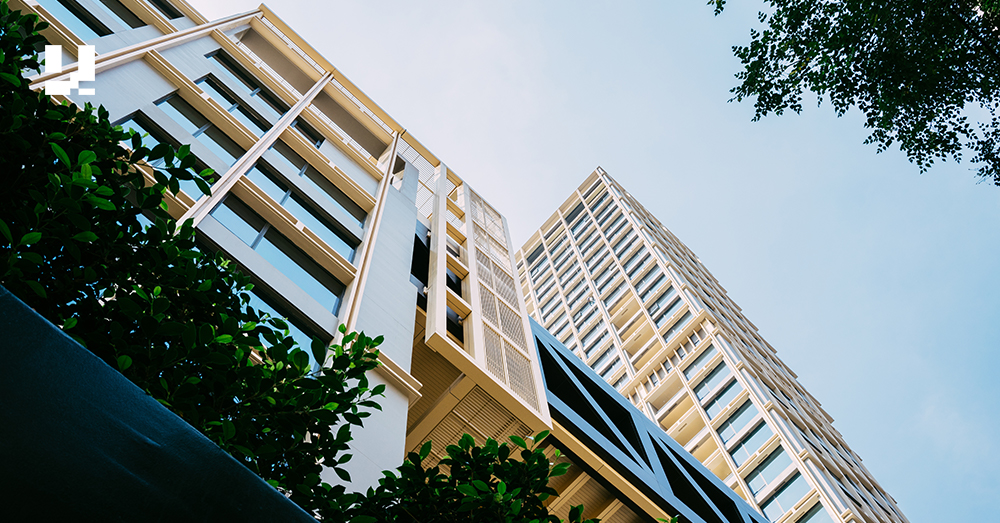
The domicile will be reorganized into two types. In the first type, the house may replace the condominium as the preferred shelter because people may be reluctant to in high-rise buildings with many unrelated neighbors and the need to share utilities such as an elevator and common areas. By contrast, working from home reduces the frequency of being the worksite, and a stand-alone house will become a more attractive option if more time is to be spent in self-isolation at unpredictable times. Plus, the price of housing in the periphery of cities should decline.
In the second style of living, people who still choose to live in condominiums in the city center will be looking for a larger unit than is currently the norm. The days of the 24-square meter room that can only fit a bed is probably behind us. That is because people are going to have to spend more time in their apartment or condominium, so it has to be at lease minimally livable. Plus, the common area of the condominium or apartment complex must be modified to support the long stay of the residents. Thus, there has to be consideration of on-site amenities and services such as health care.
The house plan design may change as well to improve hygiene and sanitation. At the beginning of the COVID pandemic, the simple advice was to wash the hands many times a day with soap and water. Now some infectious disease specialists are wondering about the need to change from outdoor clothes to a sanitized set of indoor clothes before entering the house. Ironically, this concept is not that different from traditional custom when entering a Thai wooden house where one would cleanse and change from work clothes to simple, clean attire when in the house. In the future, a safe home may include a shower room at the vestibule, or hand-washing sink at the entrance. This is similar to the practice of entering a shrine (Shinto) or a mosque where we have to wash first.
In addition, the future house must have a functional kitchen with ample storage space to allow preparation of fresh meals on an extended basis. That is because, during periods of containment, it will be more difficult for people to go out and buy food. The energy system of the house will need modification as well. When working at home, the electricity cost could become prohibitive for some city dwellers. At the least, the home energy consumption will be an added burden. There will need to be alternative energy systems and more energy options to choose from. Or each house needs a common power bank (i.e., solar panels) as energy storage. Excess energy could be returned to the grid for refunds, or stored for periods when there is insufficient sunlight.
Travel
If an outbreak of infectious disease becomes prolonged, then there will be heightened fear of being close to others. Obviously, public transport is going to change, and we are seeing how that is already happening in cities around the world. It is possible to summarize these potential adaptations in two types. In the first form, mobility options will increase and ‘micromobility’ will play a greater role. Micromobility refers to use of a vehicle with a speed not exceeding 25 kilometers per hour for traveling a distance of not more than ten kilometers, such as bicycles, scooters and, more importantly, walking must become an important part of daily life in the city like never before. The silver lining of this situation is that it presents a golden opportunity to change the use of road space. Cities have developed to the point where 90% of the road surface is dedicated to cars (at least in the case of Bangkok). It was strange, but marvelous, to see boulevards closed to vehicular traffic in so many cities around the world. Suddenly, one could see the potential for a conversion from traffic congestion to walking streets and promenades. In addition, new forms of micromobility are needed as well as expansion and improvement of pedestrian pathways. COVID-19 has perhaps created the ideal time to change urban norms of travel.
However, there will always be people who live from their worksite and have to commute via public transit. Some have suggested overlapping rush hours to reduce crowding and length of time spent commuting. Each day, there are more applications for smart phones. Should there also be a function to reserve a seat at the bus stop? A “transit app” could tell us when the next bus will arrive and let us know the seating situation so that we could reserve our place. This micro-information can be used to plan and manage on a macro scale across myriad applications. There will need to be changes in the mass transit vehicle in addition to promote safe spacing. There will be a hand-washing amenity and an abundance of sanitizing gel for every commuter. People will ‘decontaminate’ before entering a bus, train, or plane, and once again when exiting. At day’s end, the transit vehicles themselves will all be sanitized..
Working
When working-from-home becomes normative for many professionals, the domicile has to have enough space for a separate work station, or to be convertible from the work-day environment to time off. In 2015, UddC (the Urban Design and Development Center) conducted an exercise used to visualize the future of the city as part of the Bangkok250 Project (bangkok250.org) in which it was imagined that office space will shrink. The reason is due to new forms of work and the greater emphasis on freelance work among the new generation in the labor force. Younger people like the idea of being able to work from anywhere at any time. COVID-19 is the catalyst for that vision to arrive faster. More office functions are becoming outsourced. In fact, some businesses only have their own core staff — the rest of the day-to-day tasks are outsourced. The response to COVID-19 also has implications for the office lay-out. The open plan format may no longer be considered safe, and more partitioning and localized air conditioning may be needed.
Co-working spaces that are part of the sharing economy in which strangers come into contact with the same surfaces or objects will need to be adjusted. People will become increasingly leery of sharing space or objects with others. The Virtual Office will become more common, in addition to automation and outsourcing to people working from ‘home.’ More companies will do business through “cloud” applications to reduce the need for people to be physically present together in a work space.
Shopping
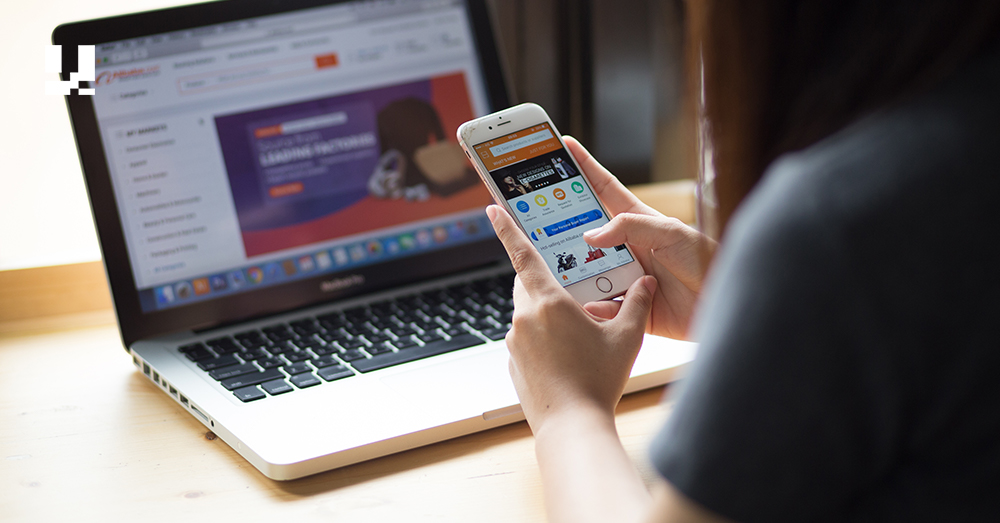
The cyber world has become a marketplace that is more heavily used than ever before – even without the pandemic. However, an unexpected consequence of COVID-19 is that the neighborhood retail stores and fresh markets have become more vital, just as they were in the pre-internet world. During periods of confinement, people cannot travel very far to do their basic shopping for everyday life. Thus, the corner store can be a lifeline for the home-bound. Localized shopping will also help keep the small merchants and “mom and pop” shops in business. In fresh markets, stalls may need to be more spaced, with a regular disinfection cleaning during the day. Restaurants, cafes may need to design partitions or individual stalls (such as the Ichiran ramen noodle chain). Some retailers may have a smaller storefront. During pandemics, there still should be places where people can sit and eat safely outdoors. These would be shady, cool, and inviting spaces and help people emerge from confined quarters eating boring take-out food.
The important role of the neighborhood in times of disaster
Apart from the changing lifestyle, the revitalization of the local neighborhood is a possible by-product of the pandemic. Every time an epidemic occurs, the city will ‘shrink’ to just the neighborhood. In other words, the radius of our social and economic lives will shrink. Neighborhoods will become micro-cities, and, thus, they must be redesigned so that people in containment zones can live relatively normal lives, without stress or depression.
One effect of COVID-19 has been to expose inequality in the city. In addition to ‘Digital Divide,’ we also have a ‘Density Divide.’ We see ‘Affluent Density’ in which rich people are conveniently confined to comfortable homes, working from home, cooking fresh meals, and doing yoga. By contrast, there is ‘Poor Density’ in which it is impossible for the low-income dweller to practice social distancing, and where the extended family is crowded into a small room, in dense housing settlements (i.e., slums).
Therefore, now is an important time to create a layout design for local communities to have public spaces that are well-protected from the elements, and with sufficient facilities and amenities for quality living. There should be convenient and comfortable pedestrian pathways with shops, markets, and vendor stalls along the way. There should be local public health services well distributed throughout the city and neighborhood so that suffering and happiness are equally divided.
Decentralize
To achieve the above vision in the case of Bangkok, there must be decentralization of administration. That means that the district offices of the Bangkok Metropolitan Administration (BMA) must have greater authority and budget to manage their area of jurisdiction. The BMA should even consider electing local administrators as “mayors” of districts as other global cities have done. That would have forge a closer bond between the local residents and the authorities. Indeed, provinces outside of Bangkok have decentralized authority to below the district level. Local government can play a more active role, say, in responding to a disaster or epidemic since they are already there and know the local situation. The experience with COVID-19 has shown how ill-prepared the BMA was. There were shortages of sanitary masks, and the district hardly played any role in the response, at least initially.
The problem of the management structure of Bangkok has been exposed before, during the massive flood disaster of 2011. Once again, a wake-up call for the BMA has come in the form of COVID-19, as an urgent alarm that it is time to overhaul the management of the city – where are the disparities? What are the priority challenges?
This is an important moment in history, at least in terms of urban planning design. Although we may not have all the answers to the questions raised at the beginning, one lesson is clear. Namely, that local neighborhoods need to be the focus of revitalization so that they are safe, healthy, and livable. That will also require a decentralization of authority which is an essential component to the successful city of tomorrow.
